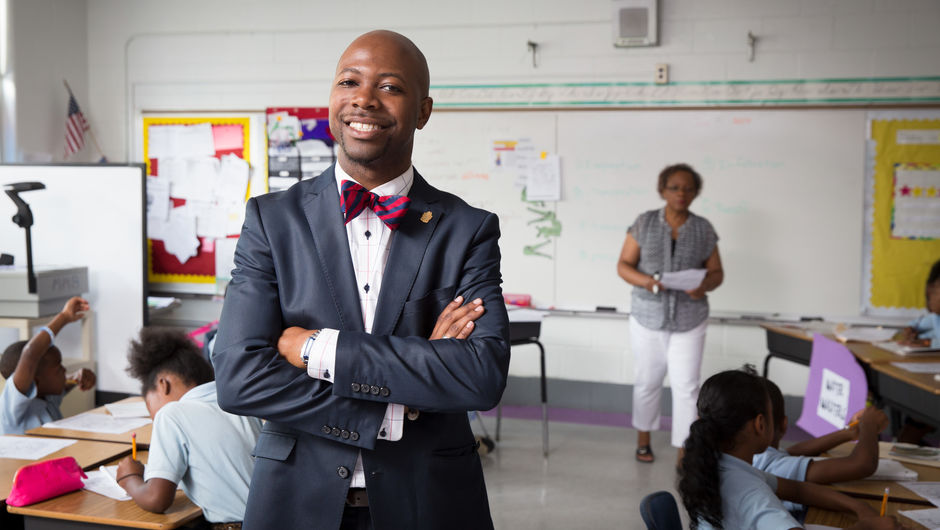

It is no great business secret that leadership positions bring responsibility – to staff, to clients, to the organisation, to shareholders, to profits. However, school leaders carry their own particular burden – the education of future generations. Poor leadership at the top of a school can permeate down through the teachers, department heads, the wider workforce - and ultimately, the pupils. Thus, a good leader in the principal’s chair is vital. But what does one look like and what traits separate him or her from their weaker peers?
Miriam Plotinsky, a Learning and Achievement Specialist with Montgomery County Public Schools in Maryland, recently mused on why some schools are more functional than others, saying that when trying to analyse educational institutions, focus often falls on teacher quality and on student performance. This, she argues, overlooks the role of school leaders. Principals, she adds, are “responsible for ensuring the effectiveness of school operations … they represent the bottom line”. Ms Plotinsky offers a summary of what characteristics deliver a strong school leader, saying that, among other things, they listen, they care, and they collaborate.
Recent research from the Association for Supervision and Curriculum Development (ASCD) has sought to determine just how important principals are in driving school outcomes and identify the traits that the most effective principals share. The analysis looked into a number of studies focusing on school authorities that leveraged administrative data over long periods and, in short, found that the quality of a school's principal is a big determinant of student achievement. The ASCD report offers that the best school leaders engage with teachers' instruction by harnessing observation, provide thoughtful feedback, and make use of data. They also take intentional steps to build a productive school climate with strong relationships; encourage collaboration; manage personnel and other resources strategically, and they also, it adds, “implement each of these practices in ways that advance equity among students”.

A quick scan of the internet reveals that there is no shortage of commentators happy to share their experience and offer up the building blocks and puzzle pieces they feel go some way to creating the very best school leader, with the importance of communication cited almost uniformly. Writing for FE Jobs, John Dabell, a former teacher and Ofsted inspector, outlines the things he says an effective principal does, including: promote the profession; talk and listen; consult their staff; welcome challenge; show appreciation; and work in a team. He argues that they must also seek to be innovative and veracious. Maxine Driscoll of Think Strategic offers her own set of tips, urging school leaders to: build trust and confidence with the school community; develop authentic professional relationships with students, staff and parents; look to always take responsibility rather than focus on blame; and define personal and professional goals each year. She also stresses the importance of establishing high performing teams and surrounding themselves with “can-do”, forward thinking people.
Noting that there are “undoubtedly dozens” of tips for principals, Paul Drewitt takes to LinkedIn to offer several he has established having reviewed “key and common traits” of leaders he has spoken with and who have contributed ideas. First among these, he says, is to maintain a positive attitude. He also advises leaders that they “should not expect to win the popularity contest” as decisions they make “will never please everyone”. Mr Drewitt also believes principals should embrace technology; connect with principals elsewhere; acknowledge and respect their predecessors, offer teachers meaningful professional development, and remember that communication is key.
In a piece offering lessons in leadership for first-year principals, Richard Carranza, chancellor at New York City Department of Education, suggests: “You can’t do everything, so don’t try.” He explains: “The number one job of the principal isn’t to solve all the problems you face, it is to help focus everyone on the right problems — the ones that if we solved would make a huge difference. You provide the focus, and the team develops the solution.” Too often, Mr Carranza suggests, leaders “try to have all the answers — and that rarely works.”
Much of the advice offered by those contributing to the debate on what constitutes a good principal would sit comfortably in columns aimed at executives and sector heads from the wider world of business and industry, yet the exceptions reveal a unique set of skills that the school leader must have. Rather appropriately, Education Slice might suggest, one of the key traits that would seemingly serve education leaders well is to never stop looking to learn.
Richard Gale, Industry Slice

Become a smarter education professional in two minutes.
Read Education Slice for brief summaries of news and actionable information to educators and administrators
.
created with
Website Builder Software .